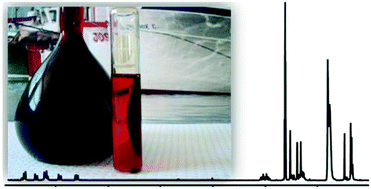Chromatographic, NMR and vibrational spectroscopic investigations of astaxanthin esters: application to “Astaxanthin-rich shrimp oil” obtained from processing of Nordic shrimps†
Abstract
Astaxanthin (ASTX) is a keto carotenoid, which possesses a non-polar linear central conjugated chain and polar β-ionone rings with ketone and hydroxyl groups at the extreme ends. It is well known as a super anti-oxidant, and recent clinical studies have established its nutritional benefits. Although it occurs in several forms, including free molecule, crystalline, aggregates and various geometrical isomers, in nature it exists primarily in the form of esters. Marine animals accumulate ASTX from primary sources such as algae. Nordic shrimps (P. borealis), which are harvested widely in the Atlantic Ocean, form a major source of astaxanthin esters. “Astaxanthin-rich shrimp oil” was developed as a novel product in a shrimp processing plant in Eastern Canada. A compositional analysis of the shrimp oil was performed, with a view to possibly use it as a nutraceutical product for humans and animals. Astaxanthin-rich shrimp oil contains 50% MUFAs and 22% PUFAs, of which 20% are omega-3. In addition, the shrimp oil contains interesting amounts of EPA and DHA, with 10%/w and 8%/w, respectively. Astaxanthin concentrations varied between 400 and 1000 ppm, depending on the harvesting season of the shrimp. Astaxanthin and its esters were isolated from the oil and analysed by NMR, FTIR and Micro-Raman spectroscopy. Astaxanthin mono- and diesters were synthesized and used as standards for the analysis of astaxanthin-rich shrimp oil. NMR and vibrational spectroscopy techniques were successfully used for the rapid characterization of monoesters and diesters of astaxanthin. Raman spectroscopy provided important intermolecular interactions present in the esterified forms of astaxanthin molecules. Also discussed in this paper is the use of NMR, FTIR and Micro-Raman spectroscopy for the detection of astaxanthin esters in shrimp oil.


 Please wait while we load your content...
Please wait while we load your content...